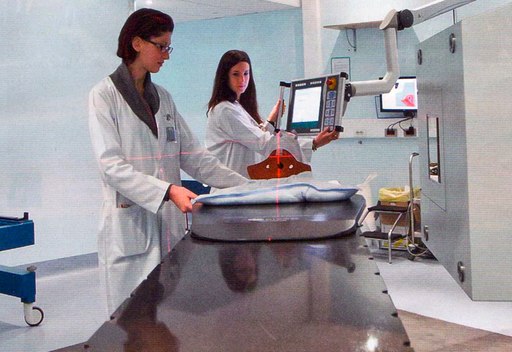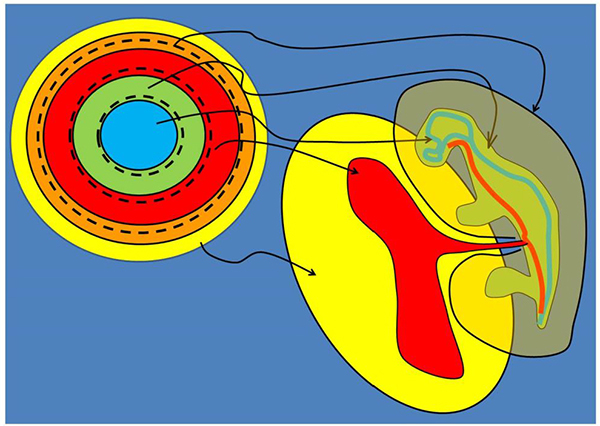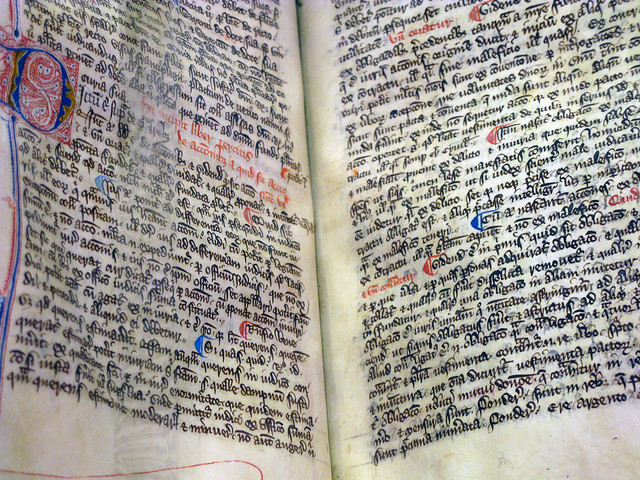News
EPJ E Highlight - Deflating beach balls and drug delivery
- Details
- Published on 21 October 2019

The deflation of beach balls, squash balls and other common objects offers a good model for distortion in microscopic hollow spheres. This can help us understand the properties of some cells and, potentially, develop new drug delivery mechanisms.
Many natural microscopic objects – red blood cells and pollen grains, for example – take the form of distorted spheres. The distortions can be compared to those observed when a sphere is ‘deflated’; so that it steadily loses internal volume. Until now, most of the work done to understand the physics involved has been theoretical. Now, however, Gwennou Coupier and his colleagues at Grenoble Alps University, France have shown that macroscopic-level models of the properties of these tiny spheres agree very well with this theory. The new study, which has implications for targeted drug delivery, was recently published in EPJ E.
EPJ B Highlight - Determining the shapes of atomic clusters
- Details
- Published on 16 October 2019

By considering the crystal structures of atomic clusters in new ways, researchers may be able to better assess whether the groups have distinctive shapes, or whether they are amorphous.
Too large to be classed as molecules, but too small to be bulk solids, atomic clusters can range in size from a few dozen to several hundred atoms. The structures can be used for a diverse range of applications, which requires a detailed knowledge of their shapes. These are easy to describe using mathematics in some cases; while in others, their morphologies are far more irregular. However, current models typically ignore this level of detail; often defining clusters as simple ball-shaped structures. In research published in EPJ B, José M. Cabrera-Trujillo and colleagues at the Autonomous University of San Luis Potosí in Mexico propose a new method of identifying the morphologies of atomic clusters. They have now confirmed that the distinctive geometric shapes of some clusters, as well as the irregularity of amorphous structures, can be fully identified mathematically.
EPJ D Highlight - Modelling ion beam therapy
- Details
- Published on 09 October 2019

Recent analysis shows precisely how beams of charged particles transfer their energy to water, which has important implications for how these beams are targeted in ion beam cancer therapy.
Hadron beam therapy, which is often used to treat solid tumours, involves irradiating a tumour with a beam of high-energy charged particles, most often protons; these transfer their energy to the tumour cells, destroying them. It is important to understand the precise physics of this energy transfer so the tumour can be targeted precisely. Pablo de Vera of MBN Research Center, Frankfurt, Germany and co-workers in the Universities of Murcia and Alicante, Spain, have produced a consistent theoretical interpretation of the most accurate experimental measurements of ion beams energy deposition in liquid water jets, which is the most relevant substance for simulating interactions with human tissue. Their work is published in EPJ D.
EPJ B Highlight - Fractal patterns in growing bacterial colonies
- Details
- Published on 18 September 2019

A new agent-based computer modelling technique has been applied to the growth and sliding movement of colonies of bacteria
As many people will remember from school science classes, bacteria growing on solid surfaces form colonies that can be easily visible to the naked eye. Each of these is a complex biological system in its own right; colonies display collective behaviours that indicate a kind of 'social intelligence' and grow in fractal patterns that can resemble snowflakes. Despite this complexity, colony growth can be modelled using principles of basic physics. Lautaro Vassallo and his co-workers in Universidad Nacional de Mar del Plata, Argentina have modelled such growth using a novel method in which the behaviour of each of the bacteria is simulated separately. This work has now been published in the journal EPJ B.
EPJ E Highlight - Shocking embryonic limbs into shape
- Details
- Published on 18 September 2019

Electrical stimulation of early chicken embryos has shed light on the process through which the limbs of all vertebrates are formed.
Every vertebrate, whatever its eventual form, starts embryonic life in the same way – as a hollow ball or disc of cells called a blastula. In theory, knowing the mechanism through which the blastula is formed into the shape of an animal could help correct defects and even, one day, regenerate body parts. But evolution and genetics are of little help in understanding this process. Now, however, Vincent Fleury and Ameya Vaishnavi Murukutla from Université Paris Diderot, Paris, France have used experiments with chicken embryos to propose a mechanism for vertebrate limb formation. These findings have been published in the journal EPJ E.EPJ B Highlight - Conductivity at the edges of graphene bilayers
- Details
- Published on 11 September 2019

The conductivity of dual layers of graphene greatly depends on the states of carbon atoms at their edges; a property which could have important implications for information transmissions on quantum scales.
Made from 2D sheets of carbon atoms arranged in honeycomb lattices, graphene displays a wide array of properties regarding the conduction of heat and electricity. When two layers of graphene are stacked on top of each other to form a ‘bilayer’, these properties can become even more interesting. At the edges of these bilayers, for example, atoms can sometimes exist in an exotic state of matter referred to as the ‘quantum spin Hall’ (QSH) state, depending on the nature of the interaction between their spins and their motions, referred to as their ‘spin-orbit coupling’ (SOC). While the QSH state is allowed for ‘intrinsic’ SOC, it is destroyed by ‘Rashba’ SOC. In an article recently published in EPJ B, Priyanka Sinha and Saurabh Basu from the Indian Institute of Technology Guwahati showed that these two types of SOC are responsible for variations in the ways in which graphene bilayers conduct electricity.
EPJ Plus Highlight - Science puts historical claims to the test
- Details
- Published on 06 September 2019

The latest analytical techniques available to scientists can confirm the validity of historical sources in some cases, and suggest a need for reconsideration in others
As any historian will tell you, we can rarely take the claims made by our ancestors at face value. The authenticity of many of the artefacts which shape our understanding of the past have been hotly debated for centuries, with little consensus amongst researchers. Now, many of these disputes are being resolved through scientific research, including two studies recently published in EPJ Plus. The first of these, led by Diego Armando Badillo-Sanchez at the University of Évora in Portugal, analysed an artefact named ‘Francisco Pizarro’s Banner of Arms’ – believed to have been carried by the Spanish conquistador during his conquest of the Inca Empire in the 16th century. The second team, headed by Armida Sodo at Roma Tre University in Italy, investigated a colour print of Charlemagne – the medieval ruler who united much of Western Europe – assumed to be from the 16th century.
EPJ D Highlight - Fragmenting ions and radiation sensitizers
- Details
- Published on 03 September 2019

A new study using mass spectrometry is helping piece together what happens when DNA that has been sensitized by the oncology drug 5-fluorouracil is subjected to the ionising radiation used in radiotherapy.
The anti-cancer drug 5-fluorouracil (5FU) acts as a radiosensitizer: it is rapidly taken up into the DNA of cancer cells, making the cells more sensitive to radiotherapy. However, little is known about the precise mechanism through which radiation damages cells. A team of scientists led by Peter van der Burgt at the National University of Ireland in Maynooth, Ireland have now used mass spectrometry to shed some light on this process; their work was recently published in EPJ D. A full understanding of this process could ultimately lead to new ways of protecting normal tissues from the radiation damage caused by essential cancer treatments.
EPJ E Topical review - Liquid-liquid criticality in the dielectric constant and refractive index: A perspective
- Details
- Published on 27 August 2019
The critical region in the phase diagram of condensed matter systems such as fluids or fluid mixtures is characterized by the anomalous behaviour of specific thermodynamic properties. In a new review article published in EPJE, Patricia Losada-Pérez (Department of Physics, Université Libre de Bruxelles) describes recent progress in the understanding of the behaviour of two intimately related properties, the dielectric constant ε and the refractive index n, when approaching the liquid-liquid critical point in binary liquid mixtures.
EPJ D Highlight - Enabling longer space missions
- Details
- Published on 15 August 2019

Hall thrusters, which are already used to propel spacecraft and satellites on long missions, could be used for even longer ones if models for minimising surface erosion were taken into account.
The 50th anniversary of the Apollo 11 moon landing has reignited interest in space travel. However, almost any mission beyond the moon, whether manned or unmanned, will require the spacecraft to remain fully operational for at least several years. The Hall thruster is a propulsion system that is often used by craft involved in long missions. A recent study by Andrey Shashkov and co-workers at the Moscow Institute of Physics and Technology, Russia has shown how the operating lives of these systems can be further extended; their work was recently published in EPJ D.




